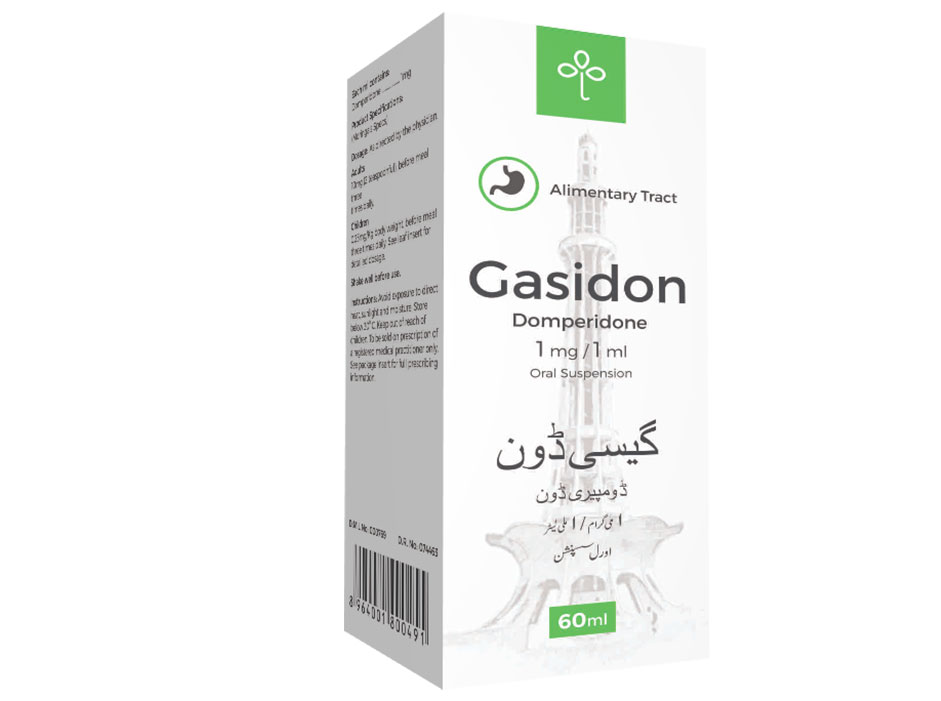Gasidon Prokinetics
Domperidone is a peripherally selective dopamine D2, receptor antagonist and is used as an antiemetic, gastroprokinetic agent, and galactagogue.

Gasidon Domperidone(60ml) 1mg/1ml
-
Adults and adolescents
12 years of age and older and weighing 35 kg or more
10 ml (of 1mg/ml oral suspension) up to three times per day with a maximum dose of 30ml per day.
The efficacy of domperidone in adolescents 12 years of age and weighing less than 35 kg has not been established.
-
Domperidone is contraindicated in the following situations:
- Known hypersensitivity to domperidone or any of the excipients.
- Prolactin-releasing pituitary tumour (prolactinoma).
- When stimulation of the gastric motility could be harmful, e.g. In patients with gastro-intestinal haemorrhage, mechanical obstruction or perforation.
- In patients with moderate or severe hepatic impairment.
- Patients with known existing prolongation of cardiac conduction intervals, particularly QTc patients with significant electrolyte disturbances or underlying cardiac diseases such as congestive heart failure.
- Co-administration with QTc-prolonging drugs given below
- anti-arrhythmics class IA (eg., disopyramide, hydroquinidine, quinidine)
- anti-arrhythmics class Ill (e.g., amiodarone, dofetilide, dronedarone, ibutilide, sotalol)
- certain anti-psychotics (e.g., haloperidol, pimozide, sertindole)
- certain anti-depressants (e.g., citalopram, escitalopram)
- certain antibiotics (e.g., erythromycin, levofloxacin, moxifloxacin, spiramycin)
- certain antifungal agents (e.g., pentamidine)
- certain antimalarial agents (in particular halofantrine, lumefantrine)
- certain gastro-intestinal medicines (e.g., cisapride, dolasetron, prucalopride)
- certain antihistaminics (e.g., mequitazine, mizolastine)
- certain medicines used in cancer (e.g., toremifene, vandetanib, vincamine)
- certain other medicines (e.g., bepridil, diphemanil, methadone).
- apomorphine; unless the benefit of the co- administration outweighs the risks, and only if the recommended precautions for co-administration are strictly fulfilled.
- Co-administration with potent CYP3A4 inhibitors (regardless of their QT prolonging effects) i.e.
- protease inhibitors
- systemic azole antifungals
- some macrolides (erythromycin, clarithromycin, telithromycin)
